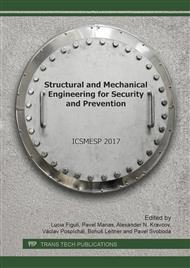p.82
p.90
p.96
p.106
p.112
p.121
p.131
p.139
p.147
Blast Resistance of Selected Barriers
Abstract:
This article is focused on the burglar resistance of object. The explosives were identified as a potential tool for an access into the mechanical barriers as parts of the shell protection. Mechanical barriers were selected according to the process of the evaluation security measures of the physical security and object security of the National Security Authority. Military regulation Žen-2-6 and mathematical relation for calculation of the maximum pressure generated by the explosion were used for analytical part of the article. The using of the explosives for the breaking of the selected barriers as well as destruction effect of the explosion are presented in the conclusion.
Info:
Periodical:
Pages:
112-120
Citation:
Online since:
September 2017
Authors:
Keywords:
Price:
Сopyright:
© 2017 Trans Tech Publications Ltd. All Rights Reserved
Share:
Citation:


